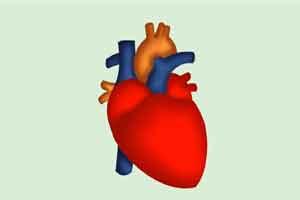- Home
- Editorial
- News
- Practice Guidelines
- Anesthesiology Guidelines
- Cancer Guidelines
- Cardiac Sciences Guidelines
- Critical Care Guidelines
- Dentistry Guidelines
- Dermatology Guidelines
- Diabetes and Endo Guidelines
- Diagnostics Guidelines
- ENT Guidelines
- Featured Practice Guidelines
- Gastroenterology Guidelines
- Geriatrics Guidelines
- Medicine Guidelines
- Nephrology Guidelines
- Neurosciences Guidelines
- Obs and Gynae Guidelines
- Ophthalmology Guidelines
- Orthopaedics Guidelines
- Paediatrics Guidelines
- Psychiatry Guidelines
- Pulmonology Guidelines
- Radiology Guidelines
- Surgery Guidelines
- Urology Guidelines
Classification of Cardiogenic shock: Consensus statement by SCAI

The Society for Cardiovascular Angiography and Interventions (SCAI) has released a clinical expert consensus statement on the classification of cardiogenic shock.
The document has been published in the Journal of Society for Cardiovascular Angiography (SCAI) -Catheterization and Cardiovascular Interventions journal It proposes a classification schema for cardiogenic shock (CS) that will facilitate communication in both the clinical and research settings.
The new CS definition is intended to provide clinicians and researchers with a unified and standardized vocabulary that will translate across all settings. Additionally, the definition aims to facilitate recognition of risk for adverse outcomes and the potential benefit from various interventions and prognosis, with the goal of reducing mortality on both an individual and national scale.
Cardiogenic shock is a condition in which the heart, often abruptly, cannot pump enough blood to meet the body's needs (Mayo Clinic). Most often accompanying larger heart attacks such as myocardial infarction (MI), outcomes for patients with cardiogenic shock complicating MI have not significantly improved over the last 30 years despite the development of various percutaneous mechanical circulatory support technologies and the national standard of emergent angioplasty and stenting.
A system describing stages of CS from "A to E" is proposed. The purpose of this proposed classification of CS is to enable clear communication regarding patient status and to allow clinical trials to appropriately differentiate CS patient subsets.
- Stage A: Patient who is "at risk" for CS but is not experiencing signs or symptoms of CS (e.g., someone with non–ST-segment elevation myocardial infarction (NSTEMI). This patient is warm and perfusing and has a normal cardiac index and no sign of volume overload or hypoperfusion.
- Stage B: "beginning" shock or compensated shock where a patient may be volume overloaded, tachycardic, and/or hypotensive but no evidence of hypoperfusion on physical exam or laboratory studies.
- Stage C is "classic" CS: Stage B patient with evidence of hypoperfusion on physical exam and laboratory studies "Cold and Wet." Invasive hemodynamics (if available) demonstrate the classic depressed cardiac index associated with CS.
- Stage D is "deteriorating": Stage C plus the failure of initial interventions in restoring adequate perfusion in 30 minutes and further escalation is required. Escalation is an increase in the number or intensity of intravenous therapies to address hypoperfusion or addition of mechanical circulatory support after the initial 30-minute period of observation and treatment.
- Stage E is "extremis": Patient is highly unstable, often with circulatory collapse and/or refractory cardiac arrest with ongoing cardiopulmonary resuscitation (CPR). They are being supported by multiple simultaneous acute interventions including extracorporeal membrane oxygenation (ECMO)-facilitated CPR (eCPR).
Key takeaways from the study are:
- Mixed shock patients have features suggestive of systemic inflammation, with or without proven infection. Such systemic vasodilation exacerbates systemic hypoperfusion and decreases coronary perfusion pressure. The potential for mixed shock emphasizes the importance of invasive hemodynamic monitoring.
- It is recommended to use a pulmonary artery catheter in the diagnosis and management of CS patients, along with rapidly transferring those requiring a higher level of care to an experienced shock center.
- A low B-type natriuretic peptide (BNP) level argues against CS in the setting of hypotension; however, an elevated BNP level does not establish the diagnosis, as any form of cardiac ventricular or atrial stress may elevate levels of this peptide.
- A low serum bicarbonate level is a better predictor of 30-day mortality than the highest recorded lactate level.
- Arterial lactate is preferable since venous lactate is generally higher than arterial lactate and the 2.0 mmol/L cut-off is best established for arterial lactate.
- Troponin T is an independent prognostic indicator of adverse outcomes and can be used as a patient risk-stratifying tool. Elevation of troponin in CS may identify patients who present late.
"The main areas we may have failed in the fight to improve mortality in cardiogenic shock is, quite simply, not speaking the same language when describing these patients," said Srihari S. Naidu, MD, FSCAI, former Society for Cardiovascular Angiography and Interventions,SCAI Trustee and chair of the writing group. "Without that, we can't even begin to understand these patients, how sick they are, what might work and what does not work. This is the most important first step, and it is important to use this classification system to reset our understanding of cardiogenic shock and restart the trials very much needed in this space."
For detailed study log on to https://doi.org/10.1002/ccd.28329

Disclaimer: This site is primarily intended for healthcare professionals. Any content/information on this website does not replace the advice of medical and/or health professionals and should not be construed as medical/diagnostic advice/endorsement or prescription. Use of this site is subject to our terms of use, privacy policy, advertisement policy. © 2020 Minerva Medical Treatment Pvt Ltd